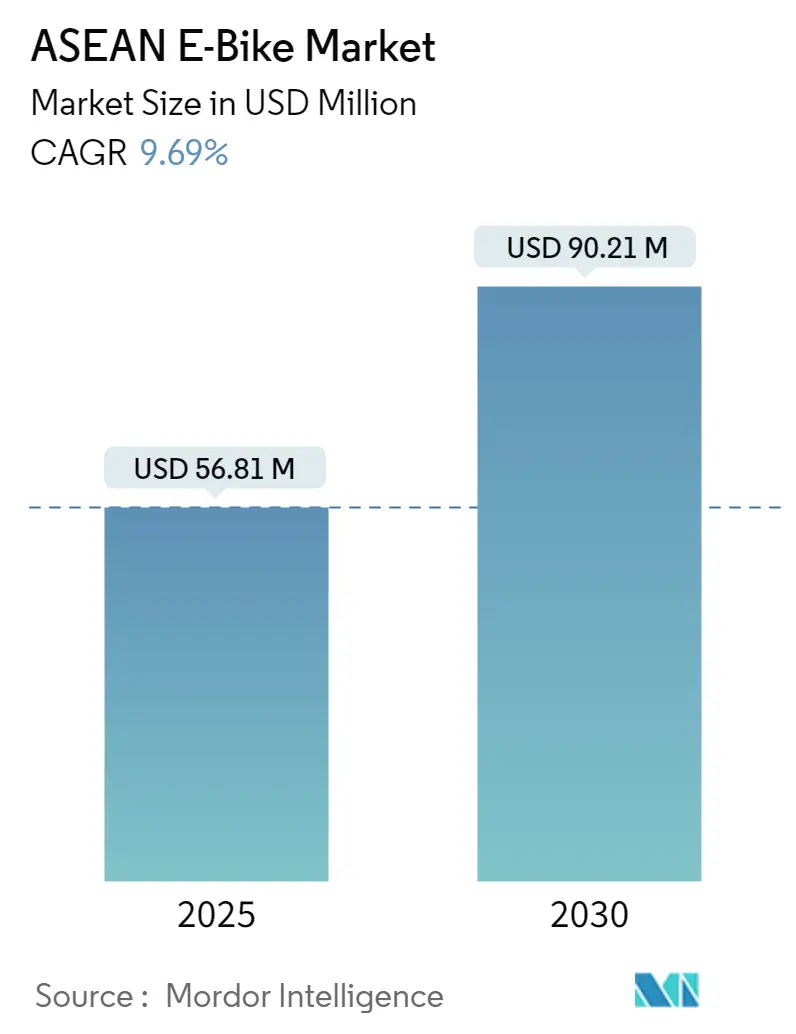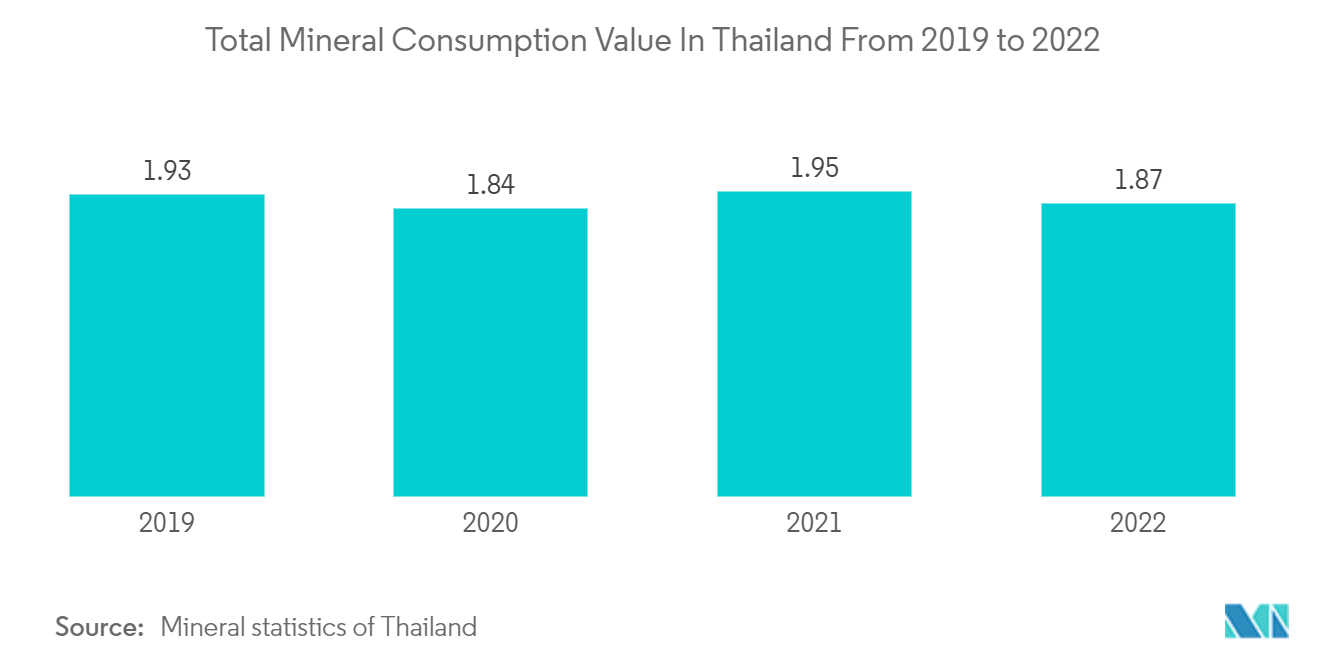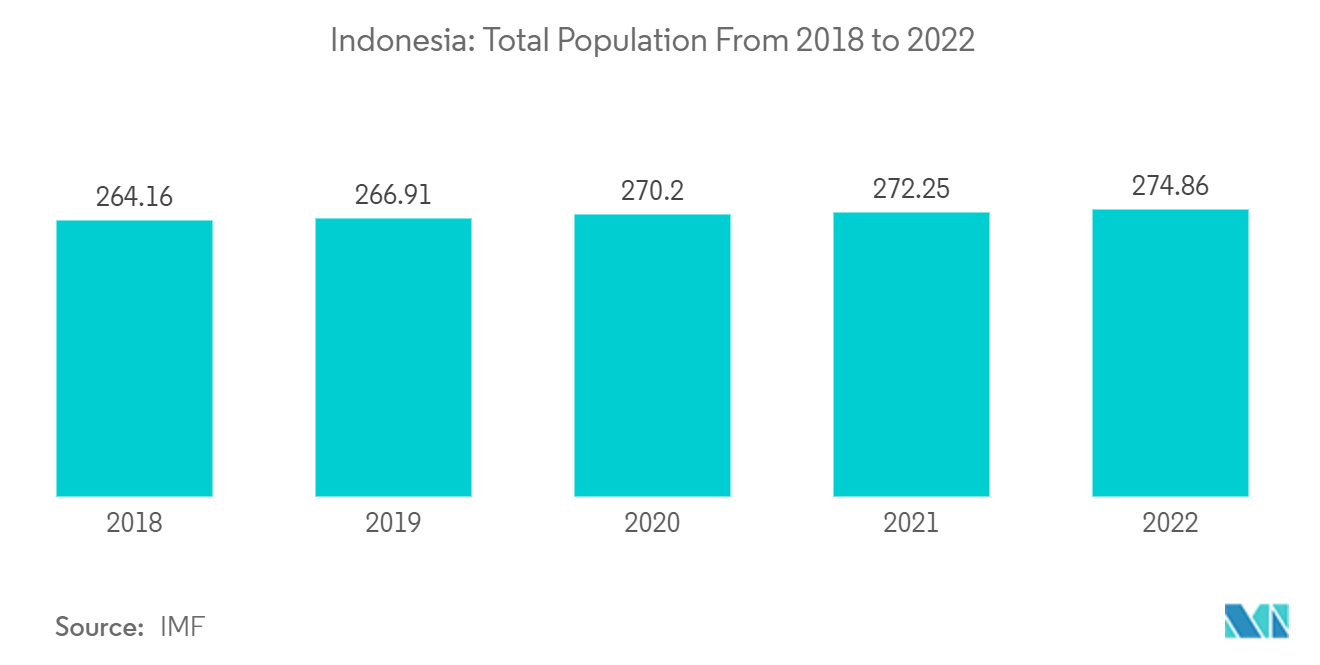Asean E-bike Market Analysis
The ASEAN E-Bike Market size is estimated at USD 56.81 million in 2025, and is expected to reach USD 90.21 million by 2030, at a CAGR of 9.69% during the forecast period (2025-2030).
The ASEAN e-bike market represents a rapidly evolving sector within the region's transportation industry, driven by factors such as urbanization, environmental concerns, and technological advancements.
- The ASEAN region, consisting of ten member states, is witnessing a growing demand for alternative modes of transportation amidst increasing urbanization and traffic congestion. E-bikes, also known as electric bicycles, have emerged as a viable solution to address these challenges by offering an environmentally friendly and cost-effective means of commuting in densely populated urban areas.
- The market for e-bikes in ASEAN is characterized by diverse consumer preferences and regulatory landscapes across different countries. While some nations have embraced e-bikes as a sustainable transportation option, others have been slower to adopt them due to infrastructure limitations and regulatory barriers. However, overall growth is fueled by increasing consumer awareness of environmental sustainability and the benefits of electric mobility.
- Technological advancements play a significant role in shaping the ASEAN e-bike market, with manufacturers investing in research and development to improve battery efficiency, motor performance, and overall ride quality. Lithium-ion battery technology, in particular, has revolutionized the e-bike industry by offering higher energy density, longer range, and faster charging times compared to traditional lead-acid batteries.
- Moreover, inadequate charging infrastructure and concerns about battery range and reliability pose challenges for the widespread adoption of e-bikes in certain ASEAN countries. Addressing these challenges requires collaboration between governments, industry stakeholders, and infrastructure developers to invest in charging infrastructure and implement supportive policies and incentives.
- Despite these challenges, the ASEAN e-bike market presents significant growth opportunities for companies willing to invest in innovation, market expansion, and consumer education. By capitalizing on the region's growing demand for sustainable transportation solutions and leveraging technological advancements, businesses can position themselves for success in this dynamic and evolving market landscape.
Asean E-bike Market Trends
Lead Acid Batteries Dominating the E-Bike Market
- In the ASEAN e-bike market, the lead acid batteries segment holds a dominant position, playing a significant role in shaping the industry landscape.
- Lead acid batteries have long been the primary choice for powering e-bikes in the ASEAN region due to their affordability, reliability, and widespread availability. These batteries utilize lead plates submerged in sulfuric acid electrolytes to generate electrical energy, providing a cost-effective solution for e-bike manufacturers and consumers alike.
- The dominance of lead acid batteries in the ASEAN e-bike market is due to their relatively low cost compared to alternative battery technologies such as lithium-ion. The affordability of lead-acid batteries makes them an attractive option for price-sensitive consumers in the region, especially in emerging markets where purchasing power may be limited.
- Moreover, lead acid batteries are well-suited for the rugged operating conditions commonly encountered in ASEAN countries, including high temperatures, humidity, and rough terrain. Their robust construction and durability make them ideal for e-bikes used in urban commuting, delivery services, and off-road adventures, providing reliable performance over extended periods of use.
- The established infrastructure for lead acid battery manufacturing, distribution, and recycling further contributes to their dominance in the ASEAN e-bike market. Local production facilities and supply chains ensure a steady availability of lead-acid batteries at competitive prices, supporting the growth of the e-bike industry in the region.
- However, the widespread adoption of lithium-ion batteries in the ASEAN e-bike market may be limited by factors such as cost, availability, and infrastructure. While lithium-ion technology continues to improve and become more affordable, it may take time for the market to fully transition away from lead-acid batteries, especially in price-sensitive segments and emerging markets.
- The lead acid batteries segment remains dominant in the ASEAN e-bike market, driven by factors such as affordability, reliability, and established infrastructure. While facing challenges related to weight, energy density, and environmental impact, lead acid batteries continue to serve as a cost-effective solution for powering e-bikes across the region.
Indonesia is Dominating the Market
- The ASEAN region is emerging as a highly promising market for the production and sale of high-end bicycles and accessories, driven by increasing internationalization and urbanization trends. Recognizing this potential, Eurobike organizers are launching ASEANbike powered by Eurobike, which is aimed at establishing an international platform for the Southeast Asian market.
- Indonesia's dominance in the ASEAN e-bike market stems from several key factors, including its large population, robust economic growth, and favorable regulatory environment. With over 270 million people in the year 2022, Indonesia represents a significant consumer base for e-bikes, driven by the need for affordable and efficient transportation solutions in densely populated urban areas.
- Moreover, Indonesia's sustained economic growth and rising disposable incomes have fueled demand for e-bikes as an alternative mode of transportation, particularly among urban commuters seeking to avoid traffic congestion and reduce travel costs. The country's expanding middle class and increasing urbanization rates further contribute to the growing popularity of e-bikes as a practical and eco-friendly mobility solution.
- Indonesia's supportive regulatory environment for electric vehicles, including e-bikes, has facilitated the market’s growth by providing incentives for manufacturers, importers, and consumers. Government initiatives such as tax breaks, subsidies, and infrastructure development initiatives for electric vehicles encourage investment in the e-bike sector and promote adoption among consumers.
- Indonesia's thriving manufacturing sector and strategic location within ASEAN make it an attractive hub for e-bike production and distribution. The country's well-established supply chains, skilled workforce, and access to raw materials contribute to its competitive advantage in the regional market, attracting both domestic and international e-bike manufacturers.
- Despite Indonesia's dominance in the ASEAN e-bike market, the industry faces challenges and uncertainties that warrant attention. These include infrastructure limitations, particularly in rural areas, where access to charging stations and maintenance services may be limited. Addressing these infrastructure gaps is essential for promoting the widespread adoption of e-bikes across the country.
- Moreover, competition from conventional bicycles and motorized scooters poses a challenge to the e-bike market, as consumers weigh their options based on factors such as price, performance, and convenience. Educating consumers about the benefits of e-bikes, such as lower operating costs, reduced emissions, and improved health and fitness, is crucial for increasing market penetration and driving demand.
- Indonesia's dominance in the ASEAN e-bike market underscores its strategic importance as a key player in the regional industry landscape. Leveraging its large population, economic growth, supportive regulatory environment, and manufacturing capabilities, Indonesia has emerged as a significant market for e-bikes, offering opportunities for growth and investment.
Asean E-bike Industry Overview
The e-bike market is highly consolidated, with major players, including Giant Bicycles, Merida, Trek Bikes, Dat Bikes, Accel Group, Yadea Technology Group Co. Ltd, and Yamaha, holding significant shares of the total market. Giant Bicycles is the largest player in the market. The companies are raising capital to increase their product portfolios through innovations.
Asean E-bike Market Leaders
-
Giant Manufacturing Co Ltd
-
Merida Industry Co Ltd
-
Yamaha Motor Co Ltd
-
Accell Group N.V
-
Trek Bicycle Corporation
- *Disclaimer: Major Players sorted in no particular order
Asean E-bike Market News
- March 2023: MYBYK launched two electric bicycle variants, named MYBYK Electric and MYBYK Electric Cargo. The MYBYK Electric model caters to both citizens and tourists, offering a solution for convenient first and last-mile connectivity. The MYBYK Electric Cargo model aims to address the last-mile delivery challenges faced by gig workers.
- March 2023: Brighton and Hove announced plans to launch a bike-sharing scheme with Beryl. About 75 e-bikes and 19 parking bays will be made available to the general public across the Bright and Hove areas.
Asean E-bike Industry Segmentation
An e-bike, short for electric bicycle, is a type of bicycle equipped with an electric motor that provides propulsion assistance to the rider. E-bikes typically feature a rechargeable battery that powers the motor, which can be activated through pedaling (pedal-assist) or by using a throttle. This electric assistance enables riders to travel longer distances, tackle hills more easily, and ride at higher speeds with less effort compared to traditional bicycles. E-bikes offer a convenient and eco-friendly mode of transportation, making them increasingly popular for commuting, leisure cycling, and recreational activities.
The ASEAN e-bike market report covers a detailed study of the latest trends and innovations. The report also covers segmentation based on propulsion type, application type, battery type, power type, and country. By propulsion type, the market is segmented into pedal-assisted and throttle-assisted (power-on-demand). By application, the market is segmented into city/urban, trekking (e-mountain bikes/E-MTB), and cargo. By battery type, the market is segmented into lithium-ion and lead-acid batteries. By country, the market is segmented into Vietnam, Indonesia, Malaysia, Thailand, Singapore, and the Rest of Southeast Asia. The report also provides market sizing and forecasts for all the segments mentioned above in USD.
| By Propulsion Type | Pedal-assisted |
| Throttle-assisted (Power-on-demand) | |
| By Application | City/Urban |
| Trekking (E-mountain Bikes/E-MTB) | |
| Cargo | |
| By Battery Type | Lithium-ion |
| Lead-acid | |
| By Country | Vietnam |
| Indonesia | |
| Malaysia | |
| Thailand | |
| Singapore | |
| Rest of Southeast Asia |
ASEAN E-Bike Market Research FAQs
How big is the ASEAN E-Bike Market?
The ASEAN E-Bike Market size is expected to reach USD 56.81 million in 2025 and grow at a CAGR of 9.69% to reach USD 90.21 million by 2030.
What is the current ASEAN E-Bike Market size?
In 2025, the ASEAN E-Bike Market size is expected to reach USD 56.81 million.
Who are the key players in ASEAN E-Bike Market?
Giant Manufacturing Co Ltd, Merida Industry Co Ltd, Yamaha Motor Co Ltd, Accell Group N.V and Trek Bicycle Corporation are the major companies operating in the ASEAN E-Bike Market.
What years does this ASEAN E-Bike Market cover, and what was the market size in 2024?
In 2024, the ASEAN E-Bike Market size was estimated at USD 51.31 million. The report covers the ASEAN E-Bike Market historical market size for years: 2019, 2020, 2021, 2022, 2023 and 2024. The report also forecasts the ASEAN E-Bike Market size for years: 2025, 2026, 2027, 2028, 2029 and 2030.
Our Best Selling Reports
ASEAN E-Bike Industry Report
Statistics for the 2025 ASEAN E-Bike market share, size and revenue growth rate, created by Mordor Intelligence™ Industry Reports. ASEAN E-Bike analysis includes a market forecast outlook for 2025 to 2030 and historical overview. Get a sample of this industry analysis as a free report PDF download.

.webp)



.webp)

